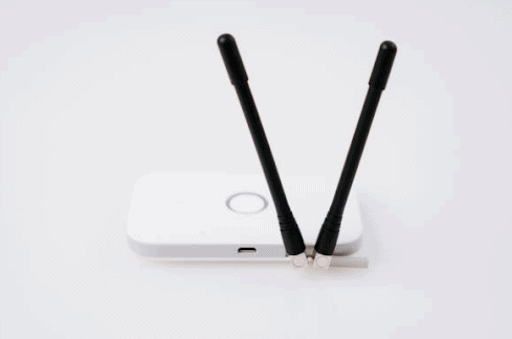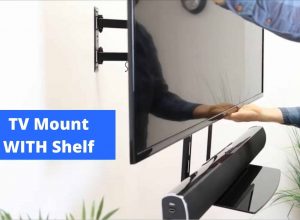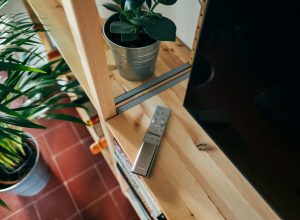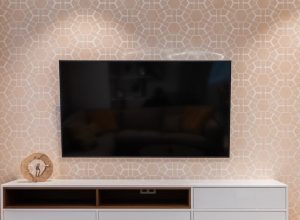Proper placement of your TV antenna is imperative for the perfect picture quality and TV signals.
Ideally, the antenna should be mounted at a place where the signal strength is the strongest.
This applies to both indoor and outdoor antennas. However, the perfect placement of an antenna is often impossible or impractical.
But, we’re are here to tell you some practical locations to mount the antenna so without further ado, let’s get started.
Outdoor Antenna vs Indoor Antenna
Before we go into detail about the mounting process, it’s important you understand the difference between an outdoor and indoor antenna.
There are pros and cons to both types.
Indoor Antenna

They are:
- Easy to install. You can put them almost right out of the box
- They have great receptivity irrespective of the location you place them in your house
Some disadvantages to indoor antennas are:
- Cheap antennas do not have the same receptivity
Outdoor Antenna

On the other hand, outdoor antennas have the following benefits:
- You have two types: omnidirectional and unidirectional
- They have a higher receptivity level for digital signals
- They have better reception since they are located at the highest point of a building
- You have a variety of shapes to choose from. For example, arrows, satellite dishes, grids, etc. Each shape has a distinct function.
- There are more than one ways to install an outdoor antenna. For example gable install, roof, wall, chimney, etc.
- A single coaxial cable is needed to connect the TV and the antenna
The disadvantages are:
- Outdoor antenna installation can be quite complicated. You are required to climb ladders, roofs and use power drills. Therefore, we would suggest you hire a professional to avoid any accidents.
- Installation of an outdoor TV antenna requires grounding so it doesn’t attract lightning.
Where to Mount your TV Antenna?
To start the process of finding the best location for your TV antenna, go to www.antennaweb.org. Here you can find the signal strength of the channels you would like to watch on your television.
If they are in the yellow category, an indoor TV antenna would have no problem picking these signals.
If they are in the green category, we would suggest you mount the antenna in the attic. Although an indoor TV antenna will also suffice.
If the desired channels are in the red category, an attic-mounted antenna will be your best option.
For stations that are in the blue or purple category, we would recommend a large outdoor antenna.
Height

The most critical factor for the best TV reception is height. This is especially true for large outdoor antennas.
Remember, the higher you can place your antenna the better the TV reception will be.
For outdoor TV antennas, we would suggest you mount them on a roof or garage. An attic is also a good option. However, make sure that it doesn’t have a radiant heat barrier or a metal roof.
But, keep in mind the dangers of installing an antenna on the roof by yourself. If you are a novice and don’t keep comfortable, we urge you to get it set up by a professional.
Similarly, a balcony is also a great place to keep your antenna if you’re living in an apartment or condo.
Moreover, to make it earlier for you to install an antenna from a window, you can purchase a flat coaxial cable.
Indoor TV antennas are far easier to install. A window or a patio door would be an ideal place. If you’re living in a double-story house, we suggest you keep the antenna on the top floor for better signals.
Note: Avoid windows or doors with metallic mesh coverings or reflective coatings as these can block the TV signals.
Antenna Direction

An over-the-air antenna will work best when you face it towards the source of the digital signal such as a broadcast tower.
Place your antenna at a window with a view of the towers. Ideally, there should be no obstructions.
This is because most channels are broadcast on the UHF spectrum. UHF signals use a higher frequency, are more sensitive to being depleted by building materials, and are more dependent on a clear line of sight to the towers.
However, if you have an omnidirectional or flat panel TV antenna you don’t really need to do this. You may see some improvements by playing with its direction.
Distributing OTA TV Antenna Signals

Let’s consider a few options to get your antenna’s signal from one point to another. Each method has its own benefits and drawbacks.
Method 1: Run a new coaxial cable
If you don’t want to drill holes into your wall, you can always get a spool of coaxial cable and connect it to the TV.
However, cables running around your house are a tripping hazard so you need to be careful with the placement.
Furthermore, the longer the coax cable between the antenna and the TV, the more likely it is to degrade your OTA signals.
Method 2: Reuse existing wire
If you already have cable TV, you may use the same wire to connect the antenna to the TV. But, if you don’t terminate unused endpoints, you might still see some signal degradation.
Method 3: Distribute Signals over Wifi
If you connect your antenna to a network-based tuner, you can place your TV antenna anywhere in your house. The antenna will use your Wifi to distribute signals to the TV.
Moreover, it will allow a single antenna to send video and audio signals to every screen in your house.
Wiring Tips
All antennas have female “F” type connectors. They are used to integrate RG6 coaxial cable.
The first thing you need to do is to connect the cable to the antenna. Then connect the same cable to your TV or converter box.
If you have a cable that is longer than 100 feet, we would suggest a JUICE preamplifier. It will help you deal with weak signals due to the length of the cable.
In addition, if you want both VHF and UHF channels, we recommend you try a UHF/VHF antenna combiner.
Wrapping Things Up…
So, these are a few options on where to mount an antenna. We hope we were able to make some things clear about the height and the direction of the antenna.
We would like to add that installing an outdoor antenna by yourself can be quite dangerous, therefore we highly suggest you call a professional to mount it.
If you’re interested in finding out how to mount TV outdoors, we have just the guide for you. Click here to give it a read.
Adam F.
A/V and Home Theater Expert that focuses on providing clear as well as concise reviews for anything and everything Audio Visual. From TV's, TV Mounts, Soundbars, and Wiring, my focus is to provide expertise in everything Audio Visual focused.










